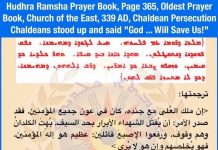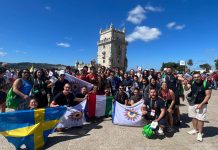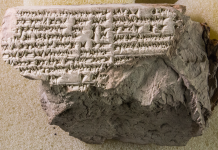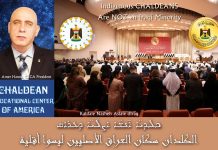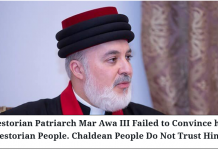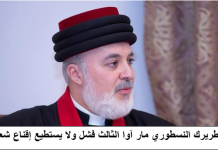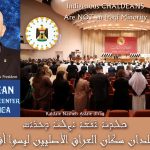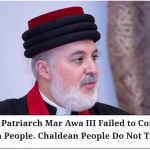Chaldean Identity in Historical Documents
Research Published by Bishop Mar Sarhad Youssab Jammo, PHD
When the messengers of Christ came to Mesopotamia and Persia, these places were under the control of the Parthian state, which was followed by the Sassanid dynasty, from the third century AD until the era of the Arab conquests. The Parthian state and then the Sassanid state divided the regions it ruled into small kingdoms, or into administrative regions called marzipans. Zoroastrianism was the official religion on the periphery of the Persian Empire, Aramaic and Chaldean, with its local dialects, was the dominant language among and around Mesopotamia. Because these elements of identity, including language, religion, and belonging to a state, were common to the people of Mesopotamia in general, belonging to a particular region or city took on the meaning of personal distinction and private belonging. One was from Hadiab, or from Mishan, or from Qatar or from Nineveh. Along these lines, the people are mentioned in the book of Acts of the Apostles: “Parithians, Medes, Elamites, and Mesopotamia… and Romanians… and Cretians and Arabs” (Acts 2,9-11) Although the congregation present in the Upper Room of Jerusalem on Pentecost was all Jewish pilgrims, their civic identity was defined by the Bible in relation to the territories in which they inhabited.
It is well established in historical documents that the first nucleus of converts to Christianity in Mesopotamia and Persia was formed from the ancient Jewish community in these places, and then these early believers were followed by crowds from different regions and backgrounds. In any case, conversion to Christianity did not add a new civic element to the elements of a common identity with the rest of the country’s population. Rather, the community of believers was distinguished from the rest of the country by belonging to the ecclesiastical structure formed by the new religion and the social and cultural connections that followed. That is, the adherents of Christianity from the people of the country remained on their civil identity, which was handed down to them from their fathers, the inhabitants of ancient Mesopotamia. Behold, a description of the sight of the believers, harvested by the sword of persecution Shabouri (340-379) in full view of the crowd of the people around them, as stated in a contemporary liturgical hymn to the events:
“The King of the Most High, with his hosts, was in the aid of gathering the faithful. The order was issued: to kill the righteous martyrs by the sword. The CHALDEANS were astonished as they stood up, and raised their finger, saying: “Great is the God of the believers, for He saves them even if He does not see”
(from the songs of the martyrs dedicated to the Friday blink). Look at how the author names the people of that day CHALDEANS raising their fingers as a sign of martyrdom of the heroism of the martyrs.
When Islam went towards Mesopotamia and Persia, it swept the strongholds of the Sassanid state and gradually penetrated throughout the country north and south, until the Abbasid state was established and concentrated in Baghdad, the new capital, and the Arab-Islamic culture became the official culture of the country, and it was clear that other marginal cultures confined to its surroundings, including the Aramaic culture, imposed on it the new conditions to gradually recede to the diora, churches and empty areas. As for Christians, Islam has made them “dhimmis” who “pay jizyah while they are small.” Thus, the name of the Nestorians and Jacobins became the common and expressive name for the identity of Christians in the Abbasid state departments, and in the literature of that era, they are subject in matters of their religion to the heads of their churches and their laws, and in their worldly matters to a civil status system, dictated by the state to them within the framework of practices ranging from harassment and tolerance.
The concept of nationalism in the contemporary sense, that is, the feeling of belonging to a certain group strengthened by cultural, emotional and geographical interdependence and historical sequence, is an issue that gradually clarified starting from the Middle Ages, coinciding with the Mongol penetration that broke through the barriers of the Abbasid state and the administrative organizations that emerged from it, until the national identity crystallized with clear features in recent times. We will see how the Chaldean name was the axis and the most likely reference around which the national consciousness of the Christians of Mesopotamia crystallized in their various phases. To the documents:
Testimonials of Western Tourists
The testimonies of tourists are very important, and they are more important than the proposals and understandings of some orientalists who acquire their information from books and sources in their workplaces without personal contact with the people of the East, their reality and their conditions. Tourists, on the other hand, write what they see and hear, so they are a more honest source that corresponds to the Eastern reality in its reality. Here are some of their testimonies:
- Marco Polo, who made a journey with his father and uncle from 1271 to 1291, later recorded his memoirs in his book Il Millione, (printed under the auspices of Ruggero Ruggeri in Florence, 1986), of which we quote the following passage in a direct translation from Italian: “Mosul is a great site, with people called Arabs… There are other people who follow the Christian law, but not according to what the Roman Church commands… They are called Nestorians and Jacobins, and they have a patriarch called Gathalika. This patriarch makes bishops, archbishops and monarchs, even in India, in Baghdad and in China… In the mountains of this kingdom there are also some Christians called Nestorians and Jacobins… ” (p. 122).
RICCOLDO DA MONTECROCE (IN HIS MEMOIRS PEREGRINATIONIS LIBER WE TRANSLATE A PASSAGE DIRECTLY FROM THE LATIN ORIGINAL WRITTEN BY THE AUTHOR IN 1292 AND RECENTLY PRINTED WITH A FRENCH TRANSLATION): “ON THE NESTORIANS … THE NESTORIANS ARE THE HERETICS WHO FOLLOW NESTORIUS AND THEODORUS… YET THESE EASTERN NESTORIANS ARE ALL CHALDEANS AND IN CHALDEAN THEY READ AND PRAY.” (PP. 136-138). “ABOUT THE KURDISH PEOPLE. THEY ARE MUSLIMS WHO FOLLOW THE QUR’AN… THEY SHOWED THEMSELVES TO BE VERY HUMANE WITH US… THEY WERE BEFORE CHALDEANS AND THEN BECAME CHRISTIANS AND IN THE THIRD STAGE MUSLIMS, BECAUSE ISLAMIC LAW IS MORE LENIENT.” (PP. 118-120).
- Giovanni Italian Dominican friar – Archbishop of the Sultanate (in his memoirs Libellus de Notizia Orbis recorded in Latin in 1404, Anton Kern German edition, 1938): “To the southeast of Persia, there is the country of Kaldu, a point in the far north of the Chaldean kingdom – which starts from a city called Maraga, which extends south to the ocean sea, and their main city is Baghdad, which in the Bible is Babylonia although not in the same location as this is on the Euphrates. This kingdom has many plains, few mountains and scarce water running in the region. There are many Arabs, CHALDEANS, Syriacs, Nestorians, Armenians and Catholics. I sent one monk to these Catholics, which increased the number of these Catholics! (pp. 117-119).
Look at how these tourists, who precede Pope Eugene IV by generations, and precede the Union of the East in Rome, speak clearly about the Chaldeans, the country of Kaldu, and the Chaldean language, and make a perfect distinction between nationalism and religion, between Nestorian, Jacobite and Catholic. See how the Assyrian or Assyrian label is completely absent from the historical reality they testify.
- Between Bishop Timathus of Chaldean and Pope Eugène IV It is my wonder and regret to notice a group of our brothers and intellectual writers repeating a song that Pope Eugene IV (1441-1447) was the one who “bestowed” the Nestorians who united in Rome with the title of Chaldean, which was later followed by the title of Patriarch of the Chaldeans, without any of these writers bothering to inquire about the original text, its meaning and content. Although the text in question dates back to 1445, and is available in sources known to scholars, I acknowledge my inability to discover any revenue or review of this Latin text, or to translate it, in any of the books and articles that parrot a saying that turns it upside down. This may end up being in a solid Latin language that is not easy to translate, so I committed myself to translating it in an article I published in Mesopotamia in 1996 (No. 95/96, pp. 181-203, entitled “The Church of the East in its Two”).
To the Vatican document:
When Bishop Timothyus, Bishop of Sypriots of Cyprus, concluded the Union with Rome in 1445 with the Maronite Metropolitan there, he had to replace his Nestorian title, which was associated with the denomination he had abandoned, with another title from which his identity would be revealed. He signed the Act of Union thus: “I, Timothy, Archbishop of Tarshish of the Chaldeans and Metropolitan of those who are in Cyprus, on my own behalf and on behalf of all the multitudes present in Cyprus, declare, acknowledge and prepare before the immortal God, the Father, the Son and the Holy Spirit, and before you, Holy and Blessed Father, Pope Eugene IV, and before this Holy Lateran Council, that I will always remain under your obedience and the obedience of your successors and the obedience of the Holy Roman Church as the mother and head of all churches (According to Shmuel Jamil, The Book of Relations, Rome 1902, p. 10).
THE PAPAL DECREE ISSUED BY EUGÈNE IV ON AUGUST 7, 1445 AD COMMENTS: “AND TIMOTHY HIMSELF, BEFORE US IN THE LATERAN ECUMENICAL COUNCIL AND IN ITS PLENARY SESSION, PROCLAIMED WITH RESPECT AND PIETY THE FORMULA OF HIS FAITH AND TEACHING, FIRST IN HIS CHALDEAN LANGUAGE, AND THEN TRANSLATED INTO GREEK AND THEN INTO LATIN.” ON THE BASIS OF THIS UNITARY DECLARATION, EUGÈNE IV PROHIBITS IN HIS AFOREMENTIONED DECREE THAT A CHALDEAN SHOULD LATER BE CALLED A NESTORIAN, AND IN THE SAME SUBJECT IT IS FORBIDDEN TO CALL MARONITES HERETICS, THUS EQUATING CHALDEANS AND MARONITES WITH ALL CATHOLICS AND RELIGIOUS PRIVILEGES. (ACCORDING TO SHMUEL JAMIL, P. 11)
It is crystal clear from the text that Pope Eugène IV cites what Bishop Timothy himself offered, with his pen and language, and repeats a text written by this bishop that he wrote and read in his Chaldean language, from which it was translated first into Greek and then into Latin. The authors of the presto claim by extension that Eugène IV also “bestowed” in the Chaldean language to Bishop Timathus and his people, since it is mentioned in his document, thus completing this additional picture of the scientific accuracy enjoyed by these writers.
If we want to understand the meaning of in’am mentioned in the texts on this subject, it is intended to exempt from residence taxes imposed on foreigners and heretics coming to Cyprus, and has nothing to do with the conferral of a new national identity for a people – this exemption from taxation included Chaldeans and Maronites because they were equal to the rest of the population, united with the Catholic Church, in civil rights and privileges.
The identity of the children of the Church of the East
When Shimon Sulaqa was installed as Catholic Patriarch of the Church of the East (Shimon is the name Sulaqa took when he was ordained episcopal), his title in Roman documents came like this: “Patriarch of the Church of Mosul in Athur”, since Mosul was the city from which the message of the group that elected him as Patriarch was addressed to the Supreme Pontiff, and there is no doubt that this title does not clearly imply any comprehensive character of the Church in question, nor does it clearly indicate the identity of the people to which it belongs, but rather reflects the character This is further evidence that Rome gave its decrees the same names as those offered to it by its owners. However, things will quickly develop in a more precise and specific direction once Rome comes into direct and comprehensive contact with the children of the Church of the East.
Rome, in order to ensure the continuation of the process of union with the children of the Church of the East, sent with Shimon Sulaqa two of its missionaries to consolidate the foundations of Catholic teaching in the hearts of his parish, Ambrosius, who was appointed papal nuncio to the Levant, and Father Zahara the monk.
“In Mesopotamia, Athor and Kaldu, where they (the missionaries) stayed for three years, preaching the word of God, with great vigilance and labor, those peoples who followed the line of Nestorius to which they were called Nestorians, teachers and courteous in the integrity of the Catholic teaching. They even denounced the name Nestorius and wished to call Chaldean (Fausti, Annals of the Order of Dominican Preachers, vol. 32 (1925), 4, pp. 1-30). It is clear, then, again in this text how it was the children of the Church of the East who wished to be called Chaldeans, and it was not Rome that “blessed” them with this name.
However, it will be clear from the contemporary documents of that era that the inhabitants of Mesopotamia and its frontiers, when their awareness of their distinct civilizational identity emerged, oscillated between two names, both of which expressed, each in a particular respect, their historical, national or geographical affiliation, namely the Chaldeans and Assyrians, and we will see how this reality will be reflected for a whole century in the synchronized documents.
After Shimon Sulaqa was martyred by the agents of Pasha al-Amadiya in 1555, the Catholic group of parishioners of the Church of the East, Mar Abd Joshua Maroun (1555-1567), elected his successor. Here we include the beginning of the theistic formula highlighted by the new patriarch in Rome on March 7, 1562: “I am the servant of Joshua, son of John, of the family of Maroun from the city of the island on the Tigris River… elected patriarch of the city of Mosul in eastern Athur” (according to Jamil, p. 63), and here Abed Joshua still reflects the local character that characterized the Catholic movement at its beginning, but the report presented by Cardinal Amulius to the cardinal body of the Tridentine Council on August 19, 1562 passes this local character in the title of patriarch to a more comprehensive character, as the new patriarch presents them as follows: (The respected Mr. Abd Joshua, the Patriarch of the Assyrians, elected by the clergy and with the consent of their people” (Jamil p. 66).
In a Roman letter dated 1565, the Chaldean and Assyrian names are combined in a single syllable. Pope Pius IV sent a letter to the Archbishop of Cowan in India, recommending Bishop Oraham, who was sent to Malabar by Patriarch Abd Joshua, saying: “To these apostolic thresholds came from India this beloved brother Oraham of the Chaldean, a nation, (sent) by our brother Abd Joshua, the Patriarch of the Assyrians” (Jamil p. 71).
After the death of Joshua, he was briefly succeeded by Mar Yabalaha who sat in Siird (1578-1580), then Shimon Danha (1581-1600), and his assistant, Bishop Elijah Hormuz Habib Asmar, sent to Rome a report in the name of the patriarch, the copy of which is still preserved in the Vatican archives (AA, Treasury 1-18, No. 1796, folio 1-4) (at Beltrami, p. 199). I humbly present how Mar Shimon Sulaqa, the Patriarch of his nation, after his return from Rome, stopped for a period of only five months and ordained five bishops and archbishops..”
Among the important documents concerning our subject is the report submitted to the Latin Pontiff Gregory XIII, Bishop of Sidon, named Leonardo Abel, sent by the Pope on a fact-finding mission in the countries of the East between 1583 and 1585, and his report was rich in information on the situation of Christians in the Middle East. Turning to the Church of the East, he says (and we are translating here from the Italian text):
“I also visited Mar Shimon Danha, Patriarch of the Chaldean Nation in Athur…”
The report then goes on to explain: “Those of the Nestorian nation inhabiting the cities of Amed, Siard, the Bekaa and nearby cities, having rebelled against their patriarch, who, until then, lived in the monastery of Rabban Hormizd near the city of Athur – today called Mosul – in Babylonia, offered obedience to the Holy Roman Church during the reign of the pontificate of Pope Julius XIII and regained their name by calling themselves the Chaldean Athor of the East” (according to Jamil, pp. 115-116).
Rome believed, on the basis of what was presented to it at the time, that the abbot Sulaqa had been elected to succeed Patriarch Shimon Barmama, on the grounds that the latter had died. As a result, Rome thought it had entered into a legal union with the Church of the East as a whole. As it was later established by Rome that Shimon Bermama was still alive at that time, she found herself confronted with a new reality: the division of the Church of the East into two groups: the “Nestorian group” headed by the patriarchal family of “Abuna” based in the monastery of Rabban Hormizd, and the Catholic group headed by the successors of Sulaqa whose headquarters shifted from Diyarbakir to Salamas in Iran and then to Cogans in Turkey. At the beginning of the seventeenth century, the Nestorian Patriarch (then Mar Elijah VIII of the Abuna family) was trying to contact Rome and exploring the possibility of reaching the legal union with it. Therefore, Mar Elijah the Patriarch sent to Pope Paul V and dated March 1610 (its original copy in the Vatican Archives, Borja Collection, Series 3, Volume 43, folio 109, and what follows – according to Jamil pp. 108-115), which is of interest to us here from this report is its conclusion, which reads as follows: “This letter, which was written by order of Mar Elijah, Patriarch of Babylon…” This report, as far as I know, is the oldest official document in which the Patriarch of the East himself adopts the title of “Patriarch of Babylon”, which undoubtedly constitutes an evolving stage of self-awareness and a return to historical origins, as stated by Abd Joshua al-Subawi in his compilation of the Sanhadusian Collection of Canons, the ninth passage;
FROM HISTORICAL DOCUMENTS WE CONCLUDE THE FOLLOWING FACTS:
- The Chaldean name is the identity of the people who stood around the martyrs who fell by the sword of Shabor persecution during the 4th century AD.
- The civil and cultural identity of Christians in Mesopotamia was not allowed to express itself under the rule of the Abbasid state, as the Arab identity became dominant and the sectarian label ‘Nestorian and Jacobite’ became the one that referred to their being and the totality of their reality.
- The fall of the Abbasid state, and the emergence of the Mongol and then Ottoman rule, gave way to the growth of nationalism among Christians. This feeling was embodied in the Chaldean identity as an expression of national identity with its cultural content and historical sequence.
- The Assyrian name was also mentioned sparingly in the sixteenth century along with the Chaldean identity, but it was always mentioned by its authors in the sense of referring to the geographical area to which Christianity receded in Mesopotamia at that time.
- The title of “Patriarch of Babylon”, which emerged since the fourteenth century after the fall of Baghdad and the decline of its importance, is a complementary element to the elements of the historical and cultural identity of the Christians of Mesopotamia: the cities that were built to occupy the status of Babylon disappeared, and Baghdad, which was built to succeed it as the capital of the state and the country, was weakened at that time.
CHALDEAN IDENTITY IN THE TITLE OF PATRIARCH OF THE EAST
If what has passed is a documentary illustration of the civil identity of the people who remained of the Church of the East in the aftermath of the Mongol era, you see what were the effects of the events of that era on the ecclesiastical presidency of that people, because it also passed with its parishioners these historical circumstances and the complications they contained. This is because the people are tied to their presidency and the presidency is tied to its people, and the search for the intended identity will not be complete if we do not follow the repercussions of events by taking a thorough look at both sides. The basis of the issue in this matter is that the isolationist part of the Church of the East, which began to be called after the second decade of the twentieth century the Assyrian Church and the Church of the Assyrians, and finally in recent decades the Assyrian Church of the East, spreads a reading of history that the presidency that exists today is a follow-up to the descendant of the first apostles of the East, Mar Thomas, Ma Adi and Mar Mary, and that the titles of “Patriarch of the East” and “Patriarch of the Assyrians” are the title of that original and frequent dynasty. This rumor continues by claiming that the series of patriarchs of the Chaldean Church that exists today is a follow-up to the federal dynasty of Johanan Sulaqa, who accepted the episcopal ordination from Pope Julius III in 1553, and that the title of “Patriarch of the Chaldeans” was given by the popes to the patriarchs united with Rome starting from the sixteenth century, it is an alien title and is confined to them and a nickname for them. This is what the rumor claims. And what kept it away from historical reality. Here are the facts and documents. Yohanan Sulaqa – his patriarchal dynasty and its fate
The period following the conclusion of the legal union with Rome was an era of intense conflict between the group of those wishing to follow the path of the union and the group of those wishing to remain in ecclesiastical isolation. On January 12, 1555, Yohanan Solaqa, representative of the first team, fell as an early martyr of the ecclesiastical union, following the torture he suffered at the hands of the agents of Pasha Amadiya as a result of the instigations of Shimon Bermama, the Nestorian Patriarch. But the march towards Rome did not stop.
In that historical period, the regions of Diyarbakir, Siird and Mardin were the center of the Catholic movement, while Mosul and its neighboring villages were the center of the Nestorian tradition, after the murder of Patriarch Yohanan Sulaqa Abed Joshua Maroun was elected Bishop of the island as his successor. He visited Rome (1561-1562) and then returned to Diyarbakir, where he managed his parish until he died in 1570. He was succeeded on the chair of the presidency of the Catholic East, Mar Yabalaha, Bishop of the island, first as a mastermind of the chair and then as a patriarch in 1578, but he died shortly after in 1580, so he was elected as his successor, Bishop of Gilo, Siird and Salamas, and took the name of Shimon IX, but instead of settling in Diyarbakir, the center of Catholic power, he turned his chair to the monastery of St. John near Salamas in Iran, where he was under severe pressure by the traditional team, and he died in 1600, so he was succeeded by Shimon X and sat down. He was also in Salamas until he died in 1638. His successors, Shimon XI (1638-1656) and Shimon XII (1656-1662), also turned the seat of the presidency into a Urumiyya in Iran.
These patriarchs were the successors of Sulaqa who sent to Rome, each in turn, formulas of their faith in which they proclaimed their Christian faith in Catholic terms, and we find most of them in the Vatican archives, the last of which is the letter of Patriarch Shimon XIII to Pope Clement X in 1670, before this patriarch reverted to ecclesiastical isolationism, entitled: “The Epistle of Saint Simeon, Patriarch of the Chaldeans” (at Jamil pp. 197-200). However, since the transition of the presidency to Iran, moving away from Diyarbakir, the center of the Catholic movement, the relations between the United Catholic Patriarchate and Rome gradually cooled until the link was completely severed during the Patriarchate of Shimon XIII (1662-1700). It is worth mentioning that this patriarch moved his chair from Khosroa in Iran to Gogans (in the Turkish mountains), and this town remained the seat of the isolated presidency until the beginning of the twentieth century. Note that these Simonite patriarchs have reverted to the custom of inheriting the See, since the death of Patriarch Shimon IX. Although the relationship between the patriarchs of this dynasty and the Roman See was severed, the title of “Patriarch of the Chaldeans” remained constant and continuous in their signatures and seals, and the Chaldean name proved in their correspondence a distinctive expression of the identity of their people. Here are the names of the patriarchs of this dynasty and follow them until the present time:
The Yohanan Sulaqa dynasty and follows it until today
| Based in | |
| (1552 – 1555) Diyarbakır | ۞ Shimon VIII (Johanan Solaqa) |
| (1555 – 1570) priced | ۞ Abd Joshua IV Maroun |
| (1572 – 1580) Price | ۞ Yabalaha IV Shamoun |
| (1561 – 1600) Salamas | ۞ Shimon IX Danha |
| (1600 – 1638) Salamas | ۞ Shimon the tenth |
| (1638 – 1656) Urmia | ۞ Shimon XI |
| (1656 – 1662) Urmia | ۞ Shimon XII |
| (1662 – 1700) Khosroa Thamqojans | ۞ Shimon XIII Danha |
| (1700 – 1740) Coganes | ۞ Shimon XIV Solomon |
| (1740 – 1780) Coganes | ۞ Shimon XV Makdisi |
| (1780 – 1820) Coganes | ۞ Shimon XVI Yohanan |
| (1820 – 1861) Coganes | ۞ Shimon XVII Abraham |
| (1861 – 1902) Coganes | ۞ Shimon XVIII Rubell |
| (1902 – 1918) Coganes | ۞ Shimon XIX Benjamin |
| (1918 – 1920) Coganes | ۞ Shimon the Twentieth Paul |
| (1920 – 1975) San Francisco | ۞ Shimon XXI Abshai |
| (1976 – ) Chicago | ۞ Dankha IV( or III) |
Severing the connection with Rome after 1670
Here are now samples of supporting documents, drawn from correspondence kept in the archives of Lambeth Palace, the seat of the Archbishop of Canterbury in London:
1- A copy of the letter sent by the Nestorian Emperor Mariusp to a noble English lady named Warren, dated March 31, 1879. Notice how this bishop knows himself and his people: “Mar Joseph Metropolitan Chaldean Nestorians of the East” and see his official seal: “Referring to Joseph Mitrapolita Dkaldayi”.
2- A copy of the letter written and sent to Ador, Archbishop of Canterbury, in October 1884, by Patriarch Rubel Chamoun, who identifies himself with these words: “From Rubel (Roll) Chamoun, by the grace of God, Patriarch of Gathalik of the East, administrator of the ancient Chaldean Church.” Consider the text of the last passage of his letter: “And (your help) will be a reason for the union of the four parts of the Chaldean Church…” With his seal: “Referring to Shimon Patriarch of Dkaldaye”.
3- A copy of the original letter written by the last Nestorian monk, “Rabbi Jonah”, and sent to the Archbishop of Canterbury Adur, dated 8 October Chaldean (sic in the Aramaic text), in 1884 – note in line 21-22 that it says:
“We grant this peace (the peace of Christ) to everyone who accepts our peace, we Chaldean Nestorians…”
4- The letter of the Metropolitan Khananishua to the sons of the Church of the East in the Archdiocese of Urmia and the parts of Kurdistan, written in 1895 and documented by his familiar seal, which reads: “Referring to Khananishua Mitrapolita Dekldayi”.
5- A second letter to Metropolitan Henanishua written on September 13, 1906, and authenticated by the same seal near the title of the letter: “Mahila Khanna Nehshua Mitrapolita D Kaldani”.
Add to that:
6- The familiar seal of Patriarch Mar Shimon Ishai, the last of the “Shimonite” patriarchs, in which we read his official title: “Referring Shimon to the Patriarch of Dkaldayi”.
7- The conclusion of a letter written by Mar Shimon Ishai, Patriarch of Nicosia in Cyprus, on the twentieth of September 1933, in which he still uses the seal announcing his official title:
“Referring to Shimon Patriarch of Da Kaldaye” (translated to:
Shimon Patriarch the Chaldean)
(translated to:
Shimon Patriarch the Chaldean)
– and he noticed how he signed in Aramaic: Ishai Chamoun by the grace of God, Catholic Patriarch of the East – and compared all this with what was written to him of a new title in English: “By the grace of God Catholic Patriarch of the Assyrians”!
Document No. 1
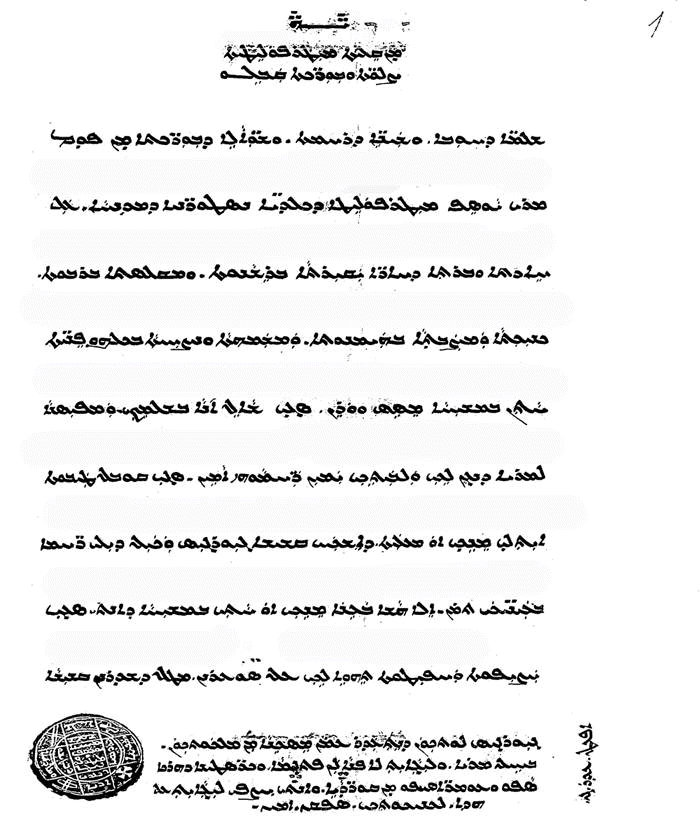
Document No. 2
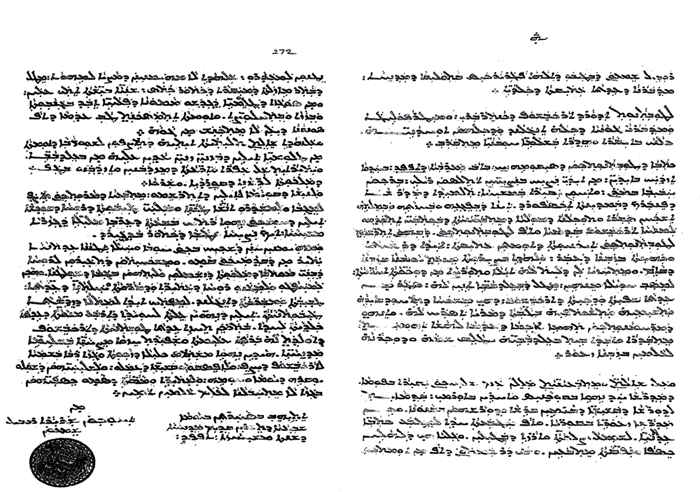
Document No. 3
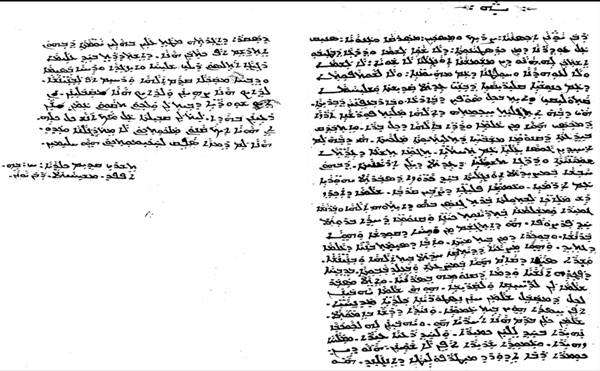
Document No. 4
Document No. 5
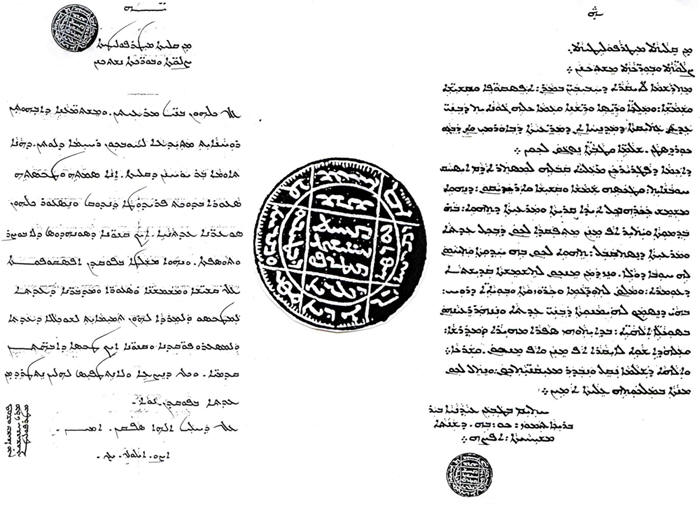
Document No. 6
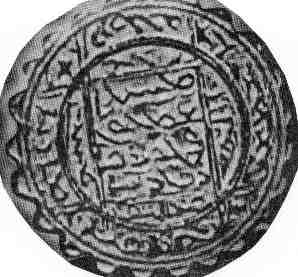
Document No. 7
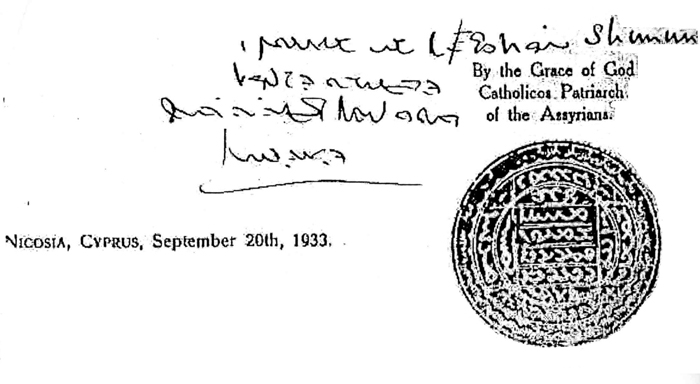
Original dynasty of the Patriarchs of the East
During this same period – and I mean from 1553, the year of the conclusion of the Union and beyond until 1830 – while the patriarchs bearing the name “Mar Simeon” were following the Catholic succession of Johanan Sulaqa, the family of “Abuna” was following in the monastery of Rabban Hormizd the original series of patriarchs of the See of the East, most of whom bear in this period the name “Mar Elijah”, and their carved monuments are still preserved in the tomb of the patriarchs next to the hermitage of Captain Hormizd, and there are nine monuments, the first of which is the tomb of Shimon IV Basidi (1437-1497) and the last of which is the tomb of Elijah XII (1778-1804), the best witness to the identity of these bodies and their place in the history of the Church of the East (see the texts of the monuments of Korgis Awad, ancient monument (pp. 33-41), until Rome recognized in 1830 Mar Johanan of Hormuz, the last patriarch of the patriarchal family – from whom the series of Chaldean patriarchs of Babylon continued to the present day united with the Roman See.



